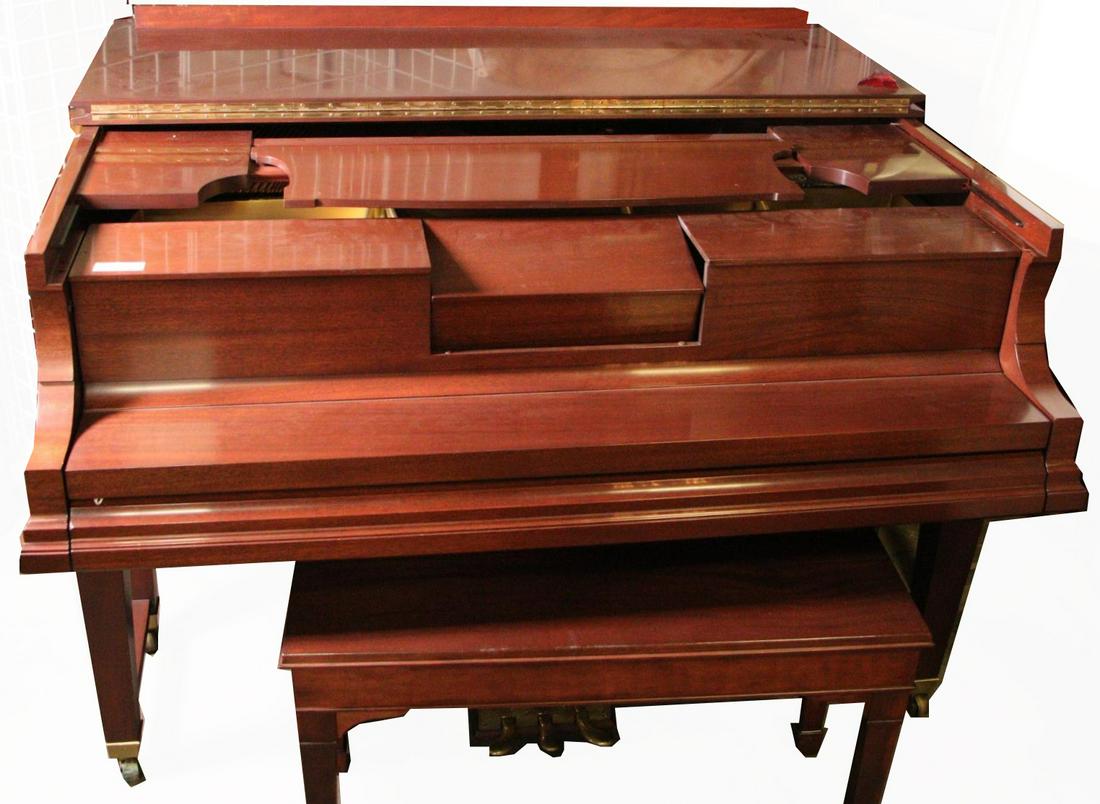

Rudolf Bing, Director of NY Metropolitan Opera, 1950 to 1972. “Experience has proven that we can always depend on Knabe.” A Knabe grand piano was played by some of the great artists of that celebrated organization, including Rosa Ponselle, a mainstay at the New York Metropolitan Opera and one of the greatest sopranos of the past 100 years. In 1926, Knabe recorded history once again, as it was chosen to be the official piano of the New York Metropolitan Opera. Knabe sponsored Tchaikovsky’s appearance as guest conductor for the opening engagement and featured a grand piano that historic night as Tchaikovsky ushered in the evening’s concert and led the New York Music Society's orchestra in Was the guest of honor for the official opening of Carnegie Hall in 1891. Peter Ilyich Tchaikovsky, the world’s greatest composer of his time, In the later decades of the 19th century, Knabe grew to be one of the most respected pianos and very popular among consumers and professionals alike. With the outbreak of the Civil War and the resulting decline of the Southern market, the company managed to keep afloat by expanding their markets into the growing American west. The company was left in the stable hands of sons William and Ernest upon the death of William Knabe in 1864. The piano was used by Key until his death in 1843 and currently resides in the Peabody Hotel in Memphis, TN. The detail of these lavish, hand-carved pianos extended around all four sides of the rosewood case and down its massive legs, while the keys were surfaced with expensive mother-of-pearl. Knabe & Gaehle became a part of American history when in 1838, Francis Scott Key, composer of “ The Star-Spangled Banner,” commissioned the company to custom-build a square grand piano for his home. Knabe & Gaehle built high-quality grands, uprights, and squares at a small factory in Baltimore and managed to compete with other larger, more established American manufacturers. Knabe partnered with Henry Gaehle to form the piano company Knabe & Gaehle, the genesis of Knabe’s storied history. In 1835, William formed his own business of buying, selling and repairing used pianos from inside his home. After immigrating to the United States and settling in Baltimore, Maryland, Knabe began working under Henry Hartye, a well-known piano maker. Knabe learned the art of cabinet and piano making through apprenticeships, dedication and hard work. Some sellers offer piano rolls in bulk which makes them ideal for crafting, whereas the rarer and more expensive types are better suited as antiques due to their price.Knabe’s rich history began more than 200 years ago when Wilhelm (William) Knabe was born in Kreuzburg, Germany in 1803. Some people collect vintage pianola player piano rolls to use in various arts and crafts projects as they make an affordable and beautiful form of paper to decorate with. Collectibles or DIY ProjectsĬollectors of vintage pianola music rolls might use these items solely as collectibles and store them away for viewing. There are piano roll collectibles available from popular shows such as Grease, Oklahoma and Les Miserables, and when played on a pianola give an authentic sound that you might find in the theatres of the past. The history of the pianola saw a lot of use in the musical theatre and it’s common to find rolls with show tunes and theatre medleys within. Many collectors look for iconic artists like The Beatles, Johnny Cash and ABBA on their player piano rolls, whose music is still widely popular today. It’s not just classical music that you’ll find on a vintage music roll, with some famous and more modern artists also available for collection. Other famous music including Christmas carols and Australian medleys are popular choices for collectors of vintage piano rolls. Pianola player piano rolls traditionally played such famous composers as Mozart and Beethoven, with fans of this classical style of music being spoilt for choice in the vintage rolls that are now available.

There are piano rolls available in all styles of music from The Beatles to famous show tunes, depending on the taste of the collector, and they’re a popular item for lovers of music and antiques. Since then, pianolas have been regarded a collector's item and the music rolls used within this instrument widely collected. The pianola first appeared in the late 19th century with sales peaking around the mid-1920's just before musical entertainment gave way to the radio and phonographs. A vintage player piano or pianola is a self-playing piano that uses rolls of perforated paper to produce notes of music.


 0 kommentar(er)
0 kommentar(er)
